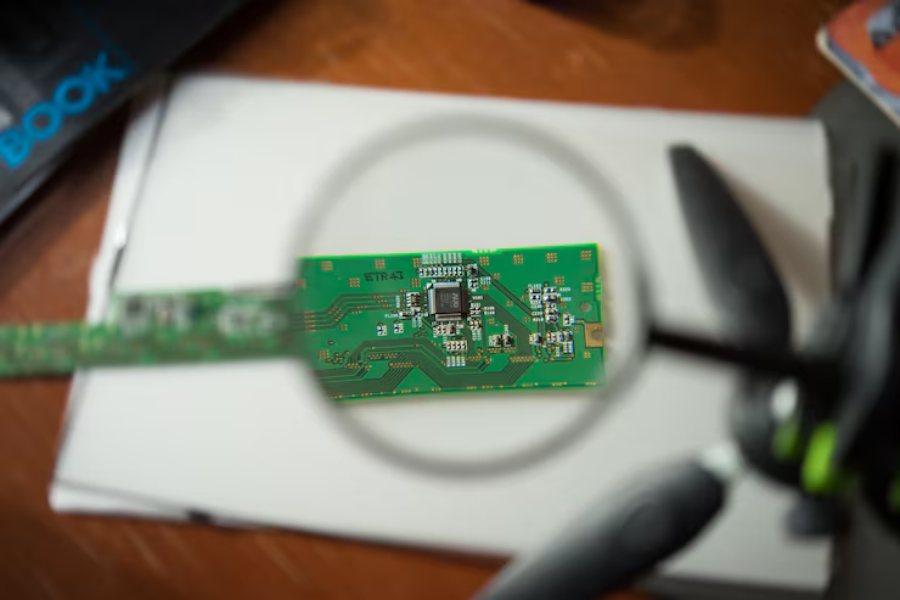Businesses looking to protect their data long-term can still rely on magnetic tape storage as a robust solution. These storage devices can protect critical information for at least thirty years if users manage to keep them properly. They also cost nowhere near as much as cloud alternatives.
IBM introduced the 3592 series with the nickname “Jaguar.” The series has grown into one of the most reliable enterprise tape storage options you can find today. The TS1170, which leads the current lineup, delivers impressive specifications that modern data centers need. These 3592 tape cartridges hold up to 50 TB of uncompressed data. They transfer data at native rates of 400 MB/s, which makes them perfect for large-scale backup operations. On top of that, every drive since the TS1120 model comes with built-in encryption processing to keep data secure throughout its lifecycle.
Companies that care about the environment have a great chance to shrink their carbon footprint. Moving less active data from hard disk drives to 3592 tape storage can cut CO2 emissions by up to 85%. This reduction applies when running about 500 terabytes of rarely accessed data over a 12-month period.
Why Long-Term Data Storage Still Matters
Physical data storage still plays a vital role in modern business infrastructure, even as cloud solutions gain popularity. Many organizations rely on durable media like 3592 tape to preserve critical information for extended periods. This approach stems from two main business needs: regulatory compliance and disaster recovery planning.
Compliance and Regulatory Needs
Businesses today face complex data retention requirements across multiple regulatory frameworks. These rules specify data security protocols and preservation timeframes. Understanding these requirements helps businesses make informed decisions about buying 3592 tape cartridges.
Financial institutions must follow the Sarbanes-Oxley Act (SOX). The law requires them to keep auditing and financial documents for at least seven years. Healthcare providers have similar rules under HIPAA, which requires a six-year minimum retention period. Basel II guidelines push organizations to maintain three to seven years of data history.
Breaking these rules can cost companies dearly. Fines under GDPR can reach up to 4% of a company’s yearly global turnover. The SEC takes action against companies that fail to retain data, especially business communications and personal identifying information (PII).
IBM 3592 tape technology comes with features that help meet these compliance challenges:
- Long-term durability – 3592 tape media can keep data safe for decades when stored properly, meeting most regulatory timeframes
- WORM (Write Once Read Many) capability – This prevents anyone from changing data after writing it, which satisfies rules like those set by the SEC
- Encryption support – Built-in encryption meets data protection requirements across various regulations
Most regulations consider one year a standard retention period. Some industries need much longer storage times. Oxford University Innovation’s information systems manager, Lasse Thomsen, explains: “IP lasts for twenty years and can still be legally held twelve years after that, as well as another year for good measure. That’s thirty-three years”.
Companies need to think about international regulations when planning their storage strategies. GDPR protections make Europe an attractive place to store data, but the right to be forgotten might create challenges. Organizations must factor in these geographical compliance issues when setting up 3592 tape infrastructure.
Disaster Recovery and Business Continuity
Tape storage helps maintain business continuity during tough times. Data backups ensure critical information stays available during crises or system failures. This makes them essential for organizations in heavily regulated industries like healthcare.
3592 tape format brings specific advantages to disaster recovery. It provides true air-gapped protection, which means backup data stays completely disconnected from network-based threats. This physical separation helps protect against ransomware attacks that target online backup systems.
A solid disaster plan needs two key metrics:
- Recovery Point Objective (RPO) – The maximum acceptable data loss measured in time
- Recovery Time Objective (RTO) – The required speed for system restoration
High capacity and transfer speeds of IBM 3592 tape solutions help meet these goals. They enable frequent backups and faster data restoration when needed.
Disaster recovery experts recommend the 3-2-1 rule: keep three copies of data, use two different media types, and store one copy offsite. 3592 tape fits perfectly here as a secondary media type that’s easy to move offsite.
Geo-redundancy protects businesses from localized disasters like power outages, floods, or regional cyberattacks. 3592 tape cartridges make it easy to implement geo-redundant storage without paying ongoing costs for multi-region cloud replication.
The 3592 format works great for organizations that keep backups indefinitely. It offers high capacity and low cost per gigabyte. This makes tape perfect for large compliance-driven archives that need long retention periods, especially when instant recovery isn’t the main priority.
In a nutshell, 3592 tape storage remains crucial for modern data management, particularly for compliance and disaster recovery planning. Physical tape offers unique advantages that help address these fundamental business needs cost-effectively while keeping data available for decades ahead.
Introducing IBM 3592 Tape Technology
The IBM 3592 tape series is the life-blood solution for organizations that need strong, long-term data protection. The original “Jaguar” nickname marked this enterprise-class technology’s beginning. Over the last several years, it has grown to become a key part of modern data management systems.
What is IBM 3592?
The IBM 3592 is a series of enterprise-class tape drives and matching magnetic tape storage formats built for high-performance environments. These systems employ half-inch tape that’s spooled onto compact 4-by-5-by-1-inch data cartridges with a single reel. This unique format packs exceptional storage density and stays reliable.
The latest model in this series, the TS1170 tape drive, offers amazing storage capacity of up to 50 TB of uncompressed data per cartridge. This storage is more than 2.5 times what LTO-9 cartridges offer. Organizations with massive data archives find this perfect for their needs.
These 3592 tape drives show impressive speed, with native data transfer rates reaching 400 MB/s. The 60F format drives can push these rates to 1,200 MB/s with compression. This speed lets businesses back up and restore critical data quickly.
IBM has created seven generations of 3592 tape drives:
- TS1160 (Model 60G)
- TS1155 (Model 55G)
- TS1150 (Model E08)
- TS1140 (Model E07)
- TS1130 (Models E06 and EU6)
- TS1120 (Model E05)
- J1A
Each new generation improves data rates, native capacity, and features. The TS1120 and later models come with built-in encryption, keeping sensitive data safe throughout its life.
How It Fits into Modern Storage Strategies
These 3592 tape drives are crucial in today’s complex storage systems. They excel at high-speed data saves when backup windows matter and large amounts of data need archiving. Large automated tape setups that need top performance and reliability will find these drives ideal.
Organizations dealing with regulations value 3592 technology’s Write-Once-Read-Many (WORM) capability. This feature stops anyone from changing data after it’s written, meeting the rules many compliance frameworks demand.
The 3592 tape cartridges let you reuse media through drive-enabled reformatting and upgrades of older generation media. This means existing cartridges work better and hold more data, which reduces the cost of tape system upgrades. Organizations can make the most of their storage investments while spending less on migration.
Data centers watching their power use save money with 3592 technology compared to disk storage. Tape storage only uses power during read/write operations, unlike hard drives that spin constantly. This leads to much lower running costs over time.
The 3592 drives include advanced features like channel calibration and on-the-fly adaptive equalization. These systems automatically tune each read and write data channel to handle changes in recording channel transfer function, media traits, and read/write head properties. You get the best performance no matter the conditions.
The TS1120 and later drives boast a mean-cycles-between-failure rate of 300,000 cycles—the industry’s best reliability rating. Special mechanical and electrical features protect your media during power cuts or resets. Your data stays safe even when unexpected things happen.
Organizations should assess their specific needs before buying 3592 tape solutions. These systems work best for large-scale mass data archives that need quick storage for later retrieval. Examples include seismic industry data, data warehousing, and record management applications.
Conclusion
IBM 3592 tape technology proves to be a highly resilient solution for organizations dealing with growing data storage challenges. This piece shows how these enterprise-class tape systems deliver exceptional value in multiple ways—from regulatory compliance to disaster recovery, from budget-friendly storage to environmental sustainability.
Companies should know that physical tape storage still plays vital roles in modern data architectures, despite cloud technology advances. The latest TS1170 model delivers impressive 50TB native capacity and 400MB/s transfer rates. This is a big deal as it means that it outperforms other storage options while working with earlier generations.
The air-gapped security of 3592 tape gives unmatched protection against network-based threats like ransomware. This physical separation works with built-in encryption and WORM capabilities to create strong defense for an organization’s most valuable data assets.
The numbers definitely favor tape storage for long-term retention. The original investment might be higher than cloud alternatives. However, the extended lifespan—potentially 30+ years—reduces total ownership costs over time. Power savings make this economic advantage even better, since tape uses energy only during active operations, unlike spinning disks that run continuously.
The environmental impact deserves special focus. Organizations that move less active data from hard drives to 3592 tape can reduce their carbon footprint by up to 85%. They also create less electronic waste through longer replacement cycles. These sustainability benefits line up perfectly with corporate environmental goals.
IBM’s research shows promise of extraordinary capacity increases that could reach 580TB per cartridge. This ambitious plan means 3592 technology will stay viable for decades, especially as major cloud providers add more tape storage to their systems.
Data protection remains one of the core responsibilities for any business. The 3592 tape format delivers this protection while balancing performance, cost, and environmental concerns. Organizations that need strong, long-term storage solutions should think over this technology as a key part of their detailed data management strategy.













































Leave a Reply